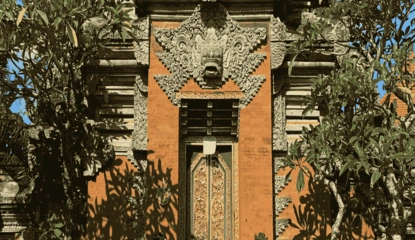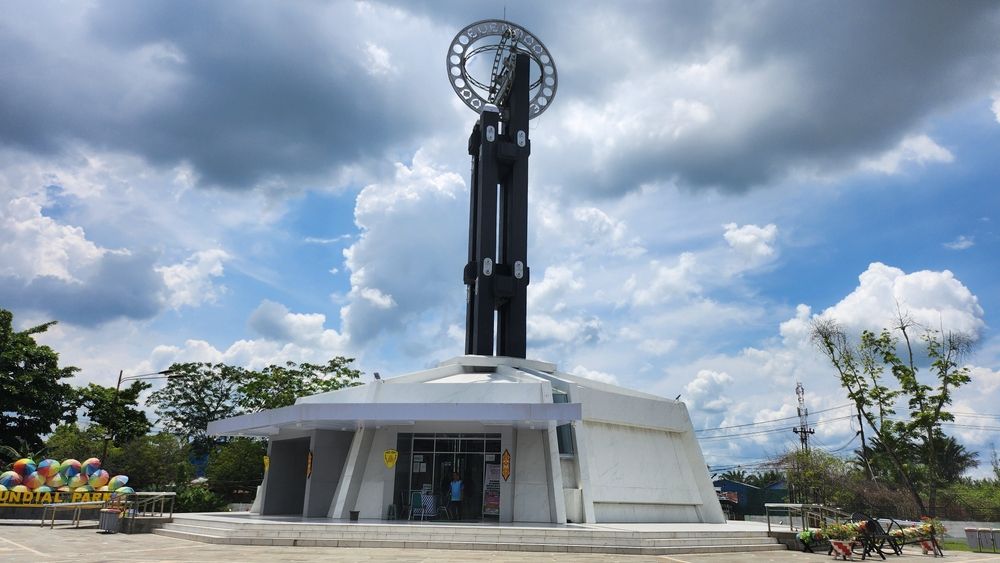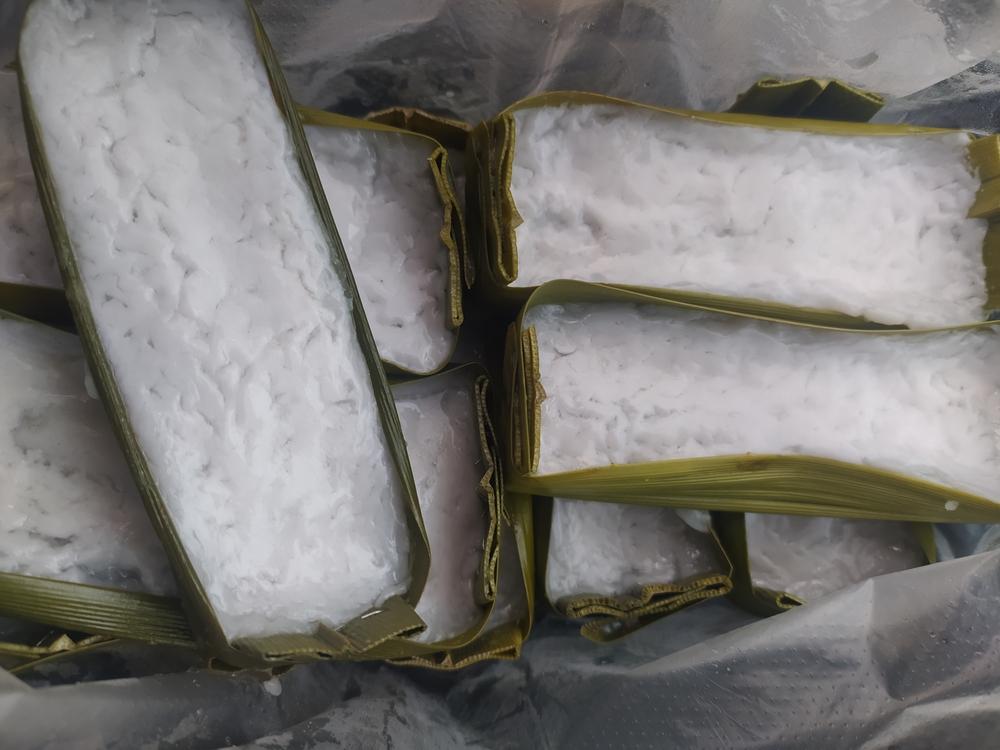Pontianak is one of the cities in Indonesia that is crossed by the equator, an imaginary line that circles the Earth. To commemorate this, a memorial named Tugu Khatulistiwa was built.
If you have never visited this vital monument, you can visit Pontianak City directly. However, first find out information to make your trip easier and safer.
Get to know Tugu Khatulistiwa: A Historical Landmark in Pontianak.
In West Kalimantan, precisely in the heart of Pontianak, stands a monument that has become a local pride and a unique international attraction, namely the Equator Monument.
This monument is not just a geographical marker, but a symbol that underlines Pontianak's specialty as the only major city in Indonesia that is crossed by the imaginary line of the Earth.
The monument, nicknamed the Equator Monument, is a silent witness to a rare natural phenomenon, a magnet for scientists, and a mandatory destination for travelers who want to experience the sensation of standing in two hemispheres at once.
The monument is located about 3 kilometers north of the center of Pontianak City, precisely on Jalan Khatulistiwa, North Pontianak. Geographically, this monument stands exactly at 0 degrees latitude or the equator (equator).
The equator itself is an imaginary line that divides the Earth into two equal parts: the Northern Hemisphere and Southern Hemisphere. It is because of this unique position that Pontianak earned the nickname "Equator City".
This monument was built as a permanent marker of the point. The presence of the equator gives the city a typical tropical climate with high rainfall and relatively stable temperatures throughout the year.
A Brief History: From Wooden Milestone to National Monument
The journey of this important monument from a mere milestone to a national memorial is a reflection of the spirit of scientific discovery and development.
Its history began in 1928. At that time, an international expedition team from the Netherlands came to Pontianak to conduct geographical research.
Initially, this imaginary line was marked by a simple wooden bollard. Over time, the wooden bollard underwent several renovations and developments.
In 1930, the wooden bollard was replaced with a cylindrical iron bollard. Then in 1938, an iron frame was built with arrows for direction, as well as a circle and an inscription indicating 0 degrees latitude.
The shape of the monument we see today is the result of a significant renovation in 1990, with the addition of a replica of the original memorial protected inside.
This monument has a very high historical and scientific value. Historically, this monument is an important relic from the era of colonial geographical research.
In terms of science, the monument is a natural laboratory for observing natural phenomena, especially the position of the sun. Its existence underscores the importance of cartography and geodesy in understanding the shape and movement of the Earth.
Solar Culmination Phenomenon: A Rare Moment Twice a Year
One of the most spectacular attractions of the Equator Monument is the occurrence of the solar culmination phenomenon. This moment occurs when the sun is directly above the equator.
When the moment occurs, the shadows of all objects that stand upright become "lost" because they fall right under the object itself. This phenomenon occurs twice a year, between March 21-23 and September 21-23.
During culmination, the monument can be the center of attention of many people who gather to witness this rare event.
Usually, there is a special ceremony to celebrate this moment. You can try standing under the monument and observing the disappearance of your own shadow. This unique experience cannot be found anywhere else.
What Can You See at the Equator Monument Complex?
The Tugu Khatulistiwa complex has been developed into an interesting educational tourism area. Here's what you can see inside the complex:
The Original Monument and its Replica
Inside the main building, you can see the original monument, protected under a glass dome.
Around it, larger replicas of the monument stand, making it easier for visitors to take photos and observe the details. This gives an idea of the evolution of the monument over time.
Mini Museum and Educational Gallery
Around the monument, there is a mini-museum and educational gallery that contains comprehensive information on the history of the memorial, the equator phenomenon, and various related geographical and scientific data.
Visitors can enrich their knowledge of geography, astronomy, and the history of the monument's discovery through the displays and information panels available.
Tourist Facilities and Photo Spots
The complex is also equipped with various tourist facilities such as toilets, a souvenir shop selling multiple equator-themed merchandise, and a rest area.
The tower itself is the most iconic photo spot. Many visitors pose with one foot in the Northern Hemisphere and the other in the Southern Hemisphere, capturing the unique moment of being in the center of the world.
Tips for Visiting the Equator Monument
If you want to visit this critical monument in West Kalimantan, take note of the following tips:
- Best time:
If you want to witness the solar culmination phenomenon, go on March 21-23 or September 21-23. For regular visits, go early in the morning or late in the afternoon to avoid the scorching sun.
- Transportation:
The monument is easily accessible from downtown Pontianak by online taxi, ojek, or public transportation.
- Have your camera ready:
Don't forget to bring your camera or phone to capture the moment, especially when taking pictures at the zero-degree line.
- Wear a hat or umbrella and bring drinking water:
Pontianak weather is often hot. Bring a hat or umbrella and enough drinking water to stay comfortable.
- Learn the history of the establishment:
It would be great if you already have a little knowledge about the history and significance of the equator before visiting.
How to Get to Tugu Khatulistiwa
There are several transportation options to get to this important landmark of Pontianak City:
From Pontianak City Center
- Private vehicle:
The monument complex is located on Jalan Khatulistiwa, North Pontianak, about 3 kilometers from the city center.
Follow the directions to North Pontianak. The journey usually takes about 15-25 minutes, depending on traffic. Parking is available on-site.
- Online or conventional taxi:
You can simply enter your destination in the search field in the app, or you can also tell the taxi driver.
- Public transportation (oplet/city bus):
You can look for public transportation with a route that passes Jalan Khatulistiwa or goes to North Pontianak. Before boarding, ask the driver whether his route passes this monument.
From Supadio Airport
- Airport taxi or online taxi:
This is the easiest way to get to the monument complex. The trip from the airport takes about 30-45 minutes, depending on traffic conditions.
The Equator Monument is not just a mark on a map, but an experience that connects us to the earth's unique geography, history of discovery, and natural wonders. Visit and learn more at this important monument!











